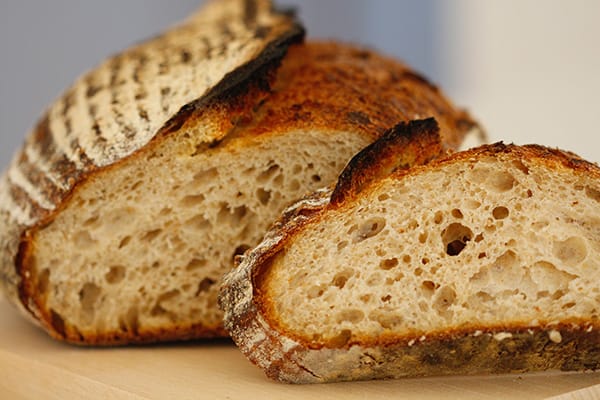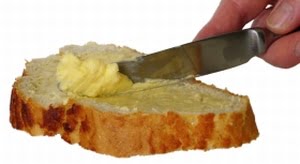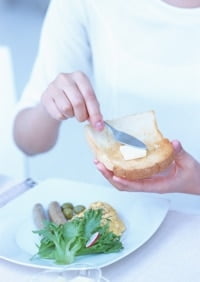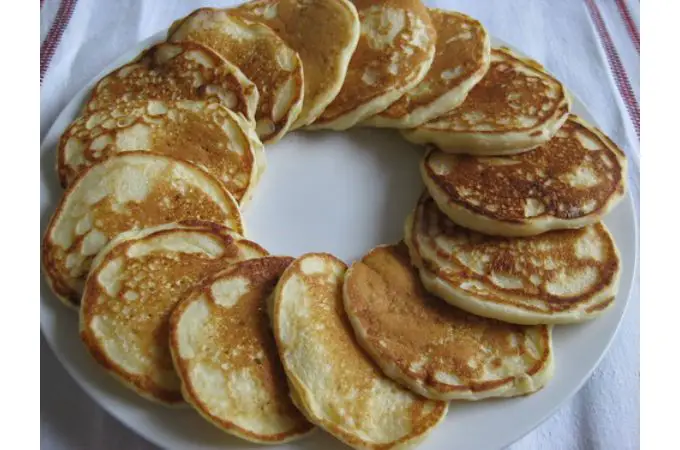Food additives: dangerous cocktails in our food

Feeding our kids nowadays has so many challenges: food specifically marketed towards children is mostly over processed, laced with numerous, potentially dangerous and unnecessary food additives and has little nutritional value.
Checking the labels and ingredients lists while shopping was a must for me and many products were crossed out. It took a while to finish my shopping initially, but in the long term I narrowed the products I buy and it helped me do the shopping quicker. Having said that, the food our family consumes isn’t completely free from food additives and preservatives. It is unrealistic to eliminate them all, especially when you have kids.
Explaining to children that some foods very popular amongst kids can be bad for them is a complicated task. Not to mention the birthday parties junk food bonanza.
Cooking from scratch using organic ingredients whenever possible is an important part of healthy, sustainable living. In our busy lives when families have little time to sit and eat together, when food outlets are at every corner and shops are full of readymade meals, many are asking: why bother cooking?
Benefits of healthy home cooking from scratch
- Eat delicious, freshly prepared food
- Cook using all natural ingredients
- Avoid or reduce food additives
- Avoid or reduce food preservatives
- Avoid or reduce artificial flavours and colours
- Support sustainable living
- Enjoy nutritious food
- Cut on over processed food without nutritional value
- Avoid packaging
- Set an example for children
- Enhance the health
- Control ingredients
- Save money
Of course, there are healthy takeaway options and home cooked meals could be quite unhealthy, too. However, when cooking from scratch there is definitely less food additives and preservatives in there, if any at all.
Food additive categories
Food additives are divided into categories and assigned a number for easier identification internationally and I guess, to shorten and hide the long and in some instances scary chemical names behind those numbers. In Europe the numbers have E in front of them. The categories are:
- 100-182 Colours
- 200-297 Preservatives
- 300-385 Acidity Regulators, Anti-Oxidants, Mineral Salts
- 400-495 Vegetable Gums, Thickeners, Emulsifiers, Stabilisers, Gelling Agents
- 500-586 Mineral Salts, Anti-Caking Agents
- 620-641 Flavour Enhancers
- 900-1521 Thickeners, Vegetable Gums, Humectants, Artificial Sweeteners, etc.
- Flavours, natural or artificial, are not regulated and thus don’t have any numeric identification
Not all food additives are made same: some are natural and ok to use, others, however whether natural or artificial are unsafe for consumption, and have been banned in different countries. While researching the food additives, I came across several food additives tables that listed potentially unsafe additives. Every source was different so I decided to make a table of food additives for myself as my personal shopping guide.
I divided food additives into two groups: green – ok to consume and red – avoid if possible. The additives in green are either natural, regarded as safe for use or derived from natural ingredients. However, some could be either derived from a natural source or made artificially like citric acid 330 or turmeric colour 100.
The additives in red have either been proven as unsafe, connected with health or behavioural problems, have not enough information about them or have been added recently to the approved list. My motto here is: if there is a question mark – it’s red.
The black numbers are the worst offenders. They are either banned in Australia or in other countries, or are suspected carcinogens! Just few of them are:
- 102 Tartrazine – Colour. Linked to hyperactivity, skin rashes, migraines, behavioural problems, thyroid problems, chromosome damage. Used to colour drinks, sweets, jams, cereals, snack foods, canned fish, packaged soups and a dye for wool and silk. Banned in Norway, Austria and Finland. Restricted use in Sweden and Germany.
- 249 Potassium nitrite – Preservative. Linked with behavioural problems, asthma, breathing difficulties, headaches, dizziness, possible carcinogen. Typical products include processed, cured and smoked meat and fish, root vegetables. Not permitted in foods for infant and young children.
- 621 Monosodium L-glutamate or MSG – Flavour enhancer. Should not be permitted in foods for infants and young children. Some of health problems MSG is linked with include asthma, hyperactivity, depression, mood changes, sleeplessness, nausea, migraine, linked to infertility. To be avoided especially by pregnant women, children, the elderly and people with heart disease. Commonly found in potato and corn chips, powdered soup stock, snacks, crackers, sauces etc.
- 951 Aspartame – Artificial sweetener. Present in more than 7000 products worldwide. Linked to many health problems: cancer, asthma, nausea, depressions, hyperactivity, seizures, breathing difficulties, memory loss and many others. It is believed to be the most dangerous food additive on the market. Sold as Equal®, NutraSweet®, Canderal®, Benevia® and Spoonful® sugar substitutes. Commonly found in cordials, juices, snacks, deserts, vitamins, diet and low calorie drinks, soft drinks and many others.
Food Additives List – Free Download!
[download id=”1″ format=”1″]
Disclaimer: I compiled this table from different sources (some listed below) for my personal use. The content is not intended to constitute professional advice nor it does include all information about every additive. If you find this Food Additive List helpful, you are welcome to download it for your personal use.
I didn’t write the names of the food additives because it would make the table too long. You can see the food additives names listed alphabetically here:
http://en.wikipedia.org/wiki/List_of_food_additives
or listed by numbers here:
http://en.wikipedia.org/wiki/List_of_food_additives,_Codex_Alimentarius
Manufactures have the choice of listing the food additives as a number or they can print the full name. For example monosodium glutamate or MSG can be identified on the ingredients list as: flavour enhancer (MSG) or flavour enhancer (621).To find out more info about a specific food additive by number or by name go to:
http://www.additivealert.com.au/
Food flavouring
Food Standards Australia New Zealand, FSANZ, states three types of food flavourings: natural, nature-identical and artificial. FSANZ definitions of the last two:
“Nature-identical substances – means flavouring substances that are obtained by synthesis or isolated through chemical processes, which are chemically identical to flavouring substances naturally present in products intended for human consumption. They cannot contain any artificial flavouring substances.
Artificial flavouring substances – means flavouring substances not identified in a natural product intended for human consumption, whether or not the product is processed.”
Unlike other food additives, flavourings aren’t assigned code numbers. They are listed simply as flavour or flavouring because as per FSANZ “It would neither be realistic to require, nor meaningful to consumers to be provided with the chemical names of the individual flavouring substances present, even if they could all be identified.”
To illustrate why it is unrealistic to list all the ingredients the artificial flavours contain, please read the ingredients list for artificial strawberry flavour:
“amyl acetate, amyl butyrate, amyl valerate, anethol, anisyl formate, benzyl acetate, benzyl isobutyrate, butyric acid, cinnamyl isobutyrate, cinnamyl valerate, cognac essential oil, diacetyl, dipropyl ketone, ethyl acetate, ethyl amyl ketone, ethyl butyrate, ethyl cinnamate, ethyl heptanoate, ethyl heptylate, ethyl lactate, ethyl methylphenylglycidate, ethyl nitrate, ethyl propionate, ethyl valerate, heliotropin, hydroxyphenyl-2-butanone (10 percent solution in alcohol), a-ionone, isobutyl anthranilate, isobutyl butyrate, lemon essential oil, maltol, 4-methylacetophenone, methyl anthranilate, methyl benzoate, methyl cinnamate, methyl heptine carbonate, methyl naphthyl ketone, methyl salicylate, mint essential oil, neroli essential oil, nerolin, neryl isobutyrate, orris butter, phenethyl alcohol, rose, rum ether, g-undecalactone, vanillin, and solvent. Yummmmy!”
One example of different wording: Pear yoghurt should contain pears, but pear flavoured yoghurt doesn’t. I usually buy plain organic yogurt and mix pureed or chopped fruit in. The best bet is to avoid flavoured products.
But wait, there is more!
There are two instances where food additives aren’t required to be listed:
- 5% loophole: additives in the ingredient that makes up 5% or less of the product.
- Processing aids – not listed although might have traces of it in the food. Example: enzymes used to pump up the bread.
Even if the label isn’t listing any food additives, we might be eating unknown substances.
Next time you go shopping or reach for processed food, please read the ingredients. Arm yourself with the knowledge about the food additives and don’t wait for the food regulation body in your country to ban or declare an additive unsafe. Be your own judge. Very often the authorities play down the research results linking specific food additives with health problems like asthma or hyperactivity. Also, the research is frequently concentrated on one additive at the time. But what happens when we eat dozens of them at the same time as a toxic cocktail, in doses well above the daily recommendations?
My main concern in regards to food is health of our kids and how to reduce the chemicals and additives they eat. The strategies I use range from buying organic whenever possible, growing some of our food, cooking from scratch to reading the labels and limiting the “bad” food, all the while risking the cross looks, complaints and occasional tantrums. Hope, our kids will appreciate it one day!
As said previously, to eliminate all food additives, chemicals, pesticides etc. is not a realistic task in 21st century. But with one step at the time, everyone can steer towards healthier food choices. And as a final word in this post: preparing fresh meals shouldn’t be regarded as a chore. It’s rather a way of looking after your health and wellbeing.
P.S. On 10 June 2009 ALDI announced reformulating all its exclusive branded food items to remove the six food colours (102, 104, 110, 122, 124, 129) which have been proven to cause hyperactivity in children. Currently ALDI is in the process of removing a further eight artificial food colours.
Read more:
Aldi’s exclusive brands now free of artificial food colours
References:
Eady Julie; Additive Alert – Your Guide to Safer Shopping
Hanssen Maurice; Additive Code Breaker
Wilkinson Giselle; The Conscious Cook







Thanks so much for a fantastic article and for providing that PDF. It is exactly what I was looking for.
Cheers,
Tina
thanks so much very realistic especially when I do have 3 young kids and trying to get them to eat as healthy as possible in these days and times!
mel
I have searched the internet for a reliable source which can list additives for me and your post is the best. I have downloaded your very useful additives list and will use it every time I shop.
Thank you very much for providing this.
Emma and Ben, mel and Tina,
thank you all for your feedback! The food additives table has been downloaded 460 times in the past 7 months. Please feel free to share it with family and friends.
Thank you for the article on food additives, much appreciated. Are there any forums or groups pushing to have additives removed from foods. I notice that many ice creams on the market have harmful colours added.
Is there a push to have these removed?
Dear Gavan,
Thank you for your feedback. There are many organisations and individuals who are campaigning against food additives in food . One example is Kids First Campaign – a joint initiative between Additive Alert, The Food Intolerance Network and Additive Education. Another example is Aldi: they have removed ALL artificial coulours from their products. But not other additives.
This food additives list is my way of raising awareness. In less than 11 months since the list was posted on Make Bread, it has been downloaded 768 times. If it helped just a few families to consume less additives, I feel I’ve contributed in the fight against additives in food.
Warm regards
P.S. If you like ice cream, try making your own :-). Here are a few recipes: Classic Vanilla and Frozen Raspberry Yoghurt.
Hello again Vesna,
I thought I would comment seeing as I am on your blog again! My partner and I have come back to this blog a number of times to re-visit the reference material you have here – it’s easy to get ‘lazy’ and forget how important these things are – the ingredients in artificial strawberry flavouring shocks us every time! (Equally as disturbing is the 5% loophole which I have never forgotten about however).
As a quick update, we are still using your guide and it has changed the way we shop drastically, many items which we once thought were ok (especially ice-cream) are now permanently on boycott watch. We have chosen instead to try make our own ice-cream or spend extra to purchase a different brand not offered at the bigger supermarket.
Although it was hard to go without such items at first, I am happy to say we are better for it. It still makes us angry to think so many products and so many companies get away with such blatant disregard for their consumers and disrespect for the ingredients they choose to put in their products, it is quite shameful to say the least.
We work hard to make good choices, we see every dollar we spend as a powerful vote for what is good.
For any shoppers like us in Australia, along with this wonderful food additives download, we strongly recommend taking with you the ‘Ethical Consumer Guide’. If I may, here is a link to their website: http://www.ethical.org.au/
Again, it is hard when suddenly so many choices are cut down, but in the end you, your family, your community and in many cases those around the world will be better for it. The power that we have as consumers is underrated, it is easy to make a difference if we avoid ignorance and strive to be healthier in every sense of the word.
We wish you all the best,
Ben 🙂 and Emma 🙂
Dear Ben and Emma,
Great to hear from you again. Thank you so much for taking time to write your feedback! Often we are enthusiastic about changes at first, but slip to the old habits again. Well done for raising your bar!
As you said, it takes time and effort to change, but in the long term it’s good for our health and pockets, too. I do my shopping much quicker now. Many items aren’t in the basket any more and I hardly visit cosmetics isle.
I do have Ethical Consumer Guide and have attended their talks – really useful guide. It makes you think about the food from a different perspective.
Cheers.
This is a refreshing post on a great subject. I wish more Americans cared more about these matters…we are the worst eaters in the world. When I tell people about aspartame, and how it got legalized, they just look at me blankly. Like, “what are you talking about and why should I care?”
Well, can’t save everyone. I cook almost everything from scratch for about 3 years and I haven’t gotten sick since then. No flues, no colds, and no shots/vaccines. Here’s to healthy eating.
Good on you, tc!
love your food additive list, wow thank you so much! i have cleaned out my fridge and pantry, not a lot left ha ha! and i thought i was a healthy shopper.
i have a 5 year old boy and 4 year old girl and i have been playing around on the edge of changing our diet as in i have been buying organic, cooking biscuits and bread and we grow our vegies, so now armed with this knowlegde i am jumping right in the deep end! no more additives for us!
thank you x
Well done rexy dog and thank you!
hello again, just an update on shopping with your table, its FAB, who knew vegemite would have colour and flavours??? good brainwashing letting us think it was so good for us………….
need help finding a dry yeast for bread machine which is number free, anyone??????
shame im not in Melbourne to do your classes:-(
thanks again oh and the kids are right into the no number eating! phew x
Hi rexy dog,
Thanks for the update :-). Organic dry yeast is available. There is a German brand of organic dry yeast called Bioreal. US brand Rapunzel has organic yeast too. Try organic shops or online.
As for Vegemite, we’ve stopped buying it a few years ago and switched to Freedom Foods Vege Spread. Nutella too has been evicted from our table. Now I make us homemade chocolate spread.
thanks you for the yeast info and funnily enough after i had asked about vegemite i too found the freedom food one, tastes great too! lucky the kids have never eaten nutella so they dont know about that one.
thank you for getting me started on the is very interesting and well worth it journey, next stop maybe home schooling, being toying with that idea too!
he can who thinks he can………………..
HI Vesna,
I didn’t know where to start and your guide made it all clear to me! I am taking it shopping with me tomorrow.
Thanks,
Melissa
I’m glad the Food Additives Table is of use to you Melissa. Thank you for your feedback.
Thank You very much from a granny trying to help my grandson your table is just what I have been trying to find.
You’re welcome Kerry. Your grandson is lucky to have you as his granny!
just a quick update Vesna, our family is still going strong on the no bad numbers way of life! it’s been great passing on your info and web site to others and networking on which products are bad number free to buy.
so thanks again on your hard work in putting together the table and have a great 2012 x
All the best in 2012 to you too, rexy dog.
Hi Vesna,
Stumbled across your site whilst looking for some info about food additives. My youngest child has been diagnosed with Global Development Delay at 17 months and we are going through all the investigations looking for the reason at the moment. In the meantime, I saw a great 4 Corners episode about the benefits of preservative- and additive-free diets for children like Charlie and thought, ‘Well, it can’t hurt!’ We’ve been following a stricter diet for everyone and have been finding it much easier thanks to your cheat sheet. One week in and we’re already seeing some really encouraging results, not just with Charlie (who has all but stopped her hand flapping, has started to communicate nonverbally with us and has improved her focus and attention significantly) but with our three older children as well. Here’s to a healtheir family all round! 🙂
Thanks again,
Fiona and Michael.
Dear Fiona and Michael,
Thank you so much for sharing your story! It’s great to hear you have such good results. I’m sure you’ll be the inspiration for many reading your feedback.
Wishing your family all the best.
Every parent should be reading this researched article ,and information should be included in school books after
Thorough checking by experts.our best wishes to the author.
great read, a healthy and responsible attitude towards food is so important